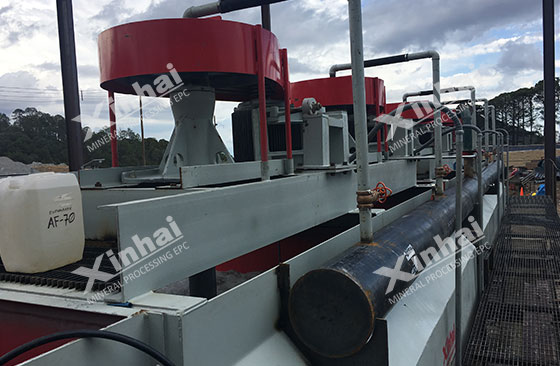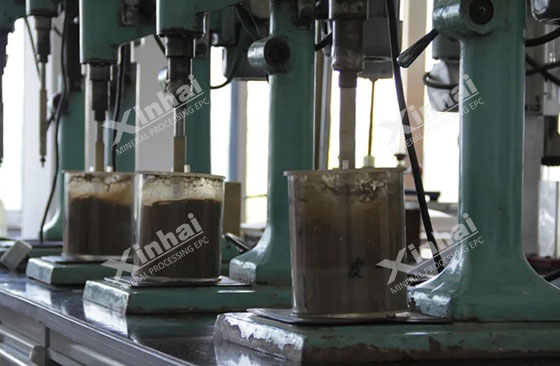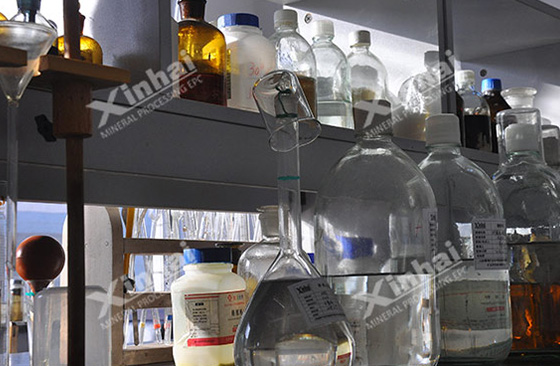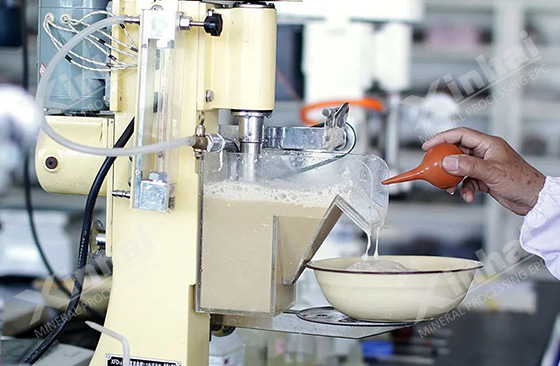Lead-zinc mines in China are mainly sulfide ores, mainly galena and sphalerite. For this type of lead-zinc ore, flotation is mainly used to achieve mineral separation and separation. However, with the gradual reduction of sulfide ores, oxidized lead-zinc ores have gradually entered the developers' field of vision, which is more difficult to separate. In the flotation process, the choice of flotation method is the top priority, but flotation reagents cannot be ignored. This article will focus on the flotation reagents of lead-zinc mines. At present, the commonly used mineral processing reagents for lead-zinc ore flotation are mainly collectors and inhibitors.
Use the table of contents below to navigate through the guide:
01Collectors for lead-zinc mines
The main function of collectors is to change the surface properties of minerals through physical or chemical reactions with the mineral surface, making them easy to be captured by flotation bubbles and taken out of the slurry. At present, the types of collectors for lead-zinc mines commonly used in ore dressing plants include xanthate, black medicine, dithiocarbamate (ester), thiocarbamate and mixed agents.

Xanthate: The xanthate collectors used for lead-zinc mines are mainly xanthate and xanthate esters. This type of agent is relatively cheap and easy to produce, but its disadvantage is that its stability and selectivity are weak. Ethyl xanthate and butyl xanthate are more commonly used.
Black medicine: Compared with yellow medicine, black medicine has weaker collection ability, but black medicine has foaming property, so less or no foaming agent can be used. Commonly used black medicines include No. 25 black medicine, black medicines made of butylamine and aniline, etc. In mineral processing, the amount of black medicine used is generally higher than that of yellow medicine, and the flotation speed is slow, but the selectivity of black medicine collectors for iron sulfide minerals is better than that of yellow medicine.
Dithiocarbamate (ester) type: This type of collector has a strong collection ability for lead ore and chalcopyrite, but weaker for pyrite, so its selectivity is better. Under pH conditions, flotation can improve the separation effect between zinc and lead-zinc, and can reduce the use of sodium cyanide. The dosage of this type of agent is only half or even one-tenth of that of yellow medicine, and the flotation speed is fast. Commonly used ones are ethyl thiocyanate and butyl thiocyanate.

Thiocarbamate: This type of collector has good selectivity, strong foaming ability and small dosage. Its collection ability is weaker than that of butyl xanthate, but it has a strong collection effect on chalcopyrite, chalcocite and activated sphalerite, and does not float pyrite. It is a highly selective collector. It can be used in combination with other collectors when treating complex and difficult-to-process lead-zinc ores. In some beneficiation plants, it is often added to the grinding process to improve its dispersibility. The commonly used thiocarbamate is Z-200, which is relatively stable under alkaline and acidic conditions and has higher selectivity and stability than xanthate and black medicine.
Mixed reagent: It is a mixture of two or more reagents, and the flotation effect is better. For example, ethyl xanthate and ethylthiocyanate as a mixed reagent have a better flotation effect on lead ore than either of them as collectors alone, and the reagent dosage is small and the collection sensitivity is higher.
02Lead-zinc mines inhibitors
The role of inhibitors is mainly to keep the mineral surface of gangue minerals hydrophilic during flotation process, and prevent them from combining with flotation bubbles and floating up. In the flotation of lead-zinc mines, commonly used inhibitors are lime, cyanide, zinc sulfate, sulfurous acid, sulfite, etc.

Lime: In the flotation of lead-zinc ore, it can not only be used as an inhibitor, but also as a pH adjuster, flocculant and heavy metal precipitant. However, the foaming performance of pine oil will be affected by the increase in pH value caused by the addition of lime. In addition, due to the coagulation of lime, the flotation effect is affected to a certain extent.
Cyanide: Sodium cyanide is a good inhibitor for lead-zinc separation, but it is less used due to its toxicity.
Zinc sulfate: It is an inhibitor for sphalerite. When zinc sulfate is used alone, the inhibitory effect is poor. It is usually used in combination with cyanide, sulfite or thiosulfate, sodium sulfide, sodium carbonate, etc.
Sulfite and sulfite: Sulfite and sulfite are mainly sulfite ions adsorbed on the surface of the inhibited mineral to inhibit pyrite and sphalerite. The inhibited sphalerite can be activated by adding CuSO4.

The above are the types of flotation reagents commonly used in lead-zinc mines flotation plants. In actual ore dressing plants, how to choose reagents and how much to use depends on the properties of the lead-zinc ore, the processing capacity of the ore dressing plant, etc. Therefore, it is recommended to conduct ore dressing tests, design suitable lead-zinc ore dressing methods through experimental analysis, and customize suitable reagent dosage and reagent system.


 marketing@ytxinhai.com
marketing@ytxinhai.com  0086 13810327080
0086 13810327080 






































































































 CHAT
CHAT MESSAGE
MESSAGE






